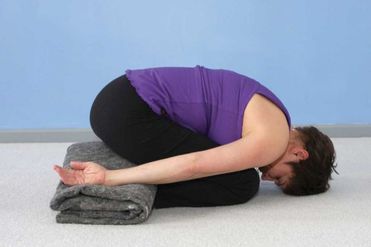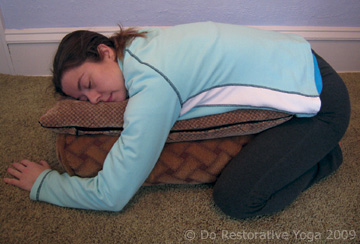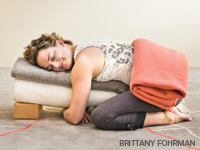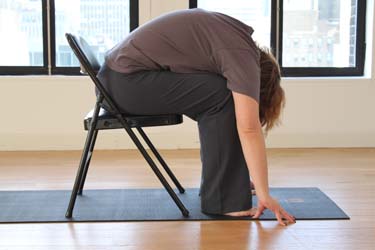|
I recently joined an online forum/support group for people who are grieving. I am blown away by the support offered by strangers from around the world. I suppose, grief and bereavement create this sort of sub-culture or club, that no one really wants to be a part of. Yet, here we are.
As I read posts from people who are struggling with their changed lives, I am brought back to how grief has touched my life, and how hard it was in the intensity of loss, to believe in my experience. Believe in my experience…believe that whatever I was feeling was OK – after 3 weeks, 3 months, 3 years or 30. I suppose it’s hindsight that has given me the strength to believe in my experience. Looking back, and even reading back (I kept meticulous journals during those early years), I see that my experience had an underlying core of “Sandy truths,” and much of my suffering was brought on by beliefs that were put in my head about how I was “doing it wrong,” or “should be____” or “could be ____.” All of this created dissonance within myself about what I was experiencing. Shouldn’t my own experience be my own truth? No one knows my life, or my loss the way I do – it is full of intimate details that only I will ever know or appreciate. Our own lives are the instrument with which we experiment with truth. – Thich Nhat Hanh This post reminds me of the one I wrote previously on Authenticity. I suppose, part of authenticity comes from experimenting with what we believe is our truths: What fits with our experience? what brings us a sense of peace? what creates more suffering? We will find things that resonate positively and negatively, and from this searching we develop our tried, tested, and true truths. Our lives, and our losses change us. Despite this huge change in life as we know it, is it possible to trust in our experience – even if our experience is misery? And trust that we can be suffering and that is Ok – in fact, that is something we can believe in? Can we find guidance in our suffering? I believe the answer is yes -because I believe there is wisdom in suffering, and even more wisdom in our own life experiences. In this way, we accept all parts of ourselves – without judgement. Namaste.
0 Comments
Last week, I asked a question on my Yoga for Grief Support Facebook page, asking readers what yoga pose was the most soothing. The most common response was child’s pose. So, I thought I would write a post on everything-child’s-pose!  Child’s Pose Childs pose is also called balasana and/or adhomukha virasana. Start by kneeling on the floor. Bring your big toes together and widen the knees, so they are about as wide as your hips. Extend and lay your torso down between your thighs. The forehead comes to rest on the floor. You can reach the arms forward with your hands comfortably shoulder width apart (top figure to the left) or you can lay them along side your body with the palms facing up and your shoulders released towards the floor, widening the upper back (middle figure to the left).With the torso resting on the thighs, and your forehead supported on the floor, child’s pose is very restful. It calms the mind and soothes the eyes and reduces stress and fatigue. Child’s pose can help relieve headaches, dizziness, and breathlessness. It can also help with symptoms associated with menstruation. Child’s pose is also considered a forward bend, and gently stretches the ankles, thighs and hips. It also can relieve tension in the back and neck when it is done with the head supported. With the arms extended, child’s pose gently stretches the long muscles of the back, shoulders and arms. If you have limited motion in the knees (osteoarthritis, knee injury) or ankles, you may require a modification. For stiff knees you can place a bolster or large rolled blanket under the hips and on top of the lower legs and heels to decrease how much bend is required in the knees. For tight ankles that don’t flatten against the floor, a smaller rolled blanket or towel can be placed under the ankles to offer support. Also, blocks, pillows, or a blanket can be used to support the head if it doesn’t easily rest on the mat. Some other variations that can be quite soothing and supportive are pictured below: In the first photo, the body is supported by a stack of bolsters or blankets. Build the stack high enough that you can comfortably rest on the bolsters and relax your legs, hips and shoulders. You can turn your head to the left or the right, just be sure to change the position to the other side to balance the stretch in the neck. This modification would be helpful if you have tight hips, as it decreases the amount of bend, by raising the height of your torso. You could also set up your bolster with a lift (as pictured below) so you can wrap your arms around the bolster, which you might find comforting. Also, a blanket or sandbag on the pelvis can provide a gentle way to relax and deepen into the pose. Another variation that does not require much equipment is the chair variation…..which can be a great way to relieve stress and tension from the back of the body. Let your head, arms and torso drape over your thighs. This modification would be appropriate for people who find child’s pose uncomfortable on the knees, shins and ankles. Breathing and Calming the Mind
Child’s pose is an excellent pose to feel the breath, as you can feel the movement of the chest and abdomen against the thighs as you breathe. When you can feel the body move with the breath you add another dimension to your breathing experience thereby making it more conscious. Due to the position of the back, you may also feel the breath expanding the back of the body. This is an excellent way to breathe in child’s pose – directing the breath to the back of the body – inhaling and feeling the expansion of the lower back, elongating the muscles along the spine, and broadening the shoulder blades. With the exhalation, soften your body, and let it surrender to the support of the floor or your props. Breathing with a lengthened exhalation can help to calm your nervous system. Count the length of your in-breath, and then try to make your out-breath a little longer – without creating tension in the breath, jaw and face. Smooth, easy, deep breathing. With the forehead supported, it can be especially calming to use the pressure of your forehead on the ground to push the skin towards your eyes – essentially helping to close your eyes (moving the opposite direction would be opening the eyes, which would be more stimulating). Again, doing this gently so you don’t create added tension or discomfort. In child’s pose, as we curl ourselves into a naturally comforting position, we are figuratively (and literally, I suppose) turning ourselves inward. This position of introspection has great healing potential and can be a source of strength to be true to yourself. Child’s pose is an expression of simplicity, innocence and rest. You can read more about forward bends here. |
AuthorSandy Ayre Categories
All
Archives
December 2022
|
Classes
|
Helpful Info
|
|





 RSS Feed
RSS Feed
